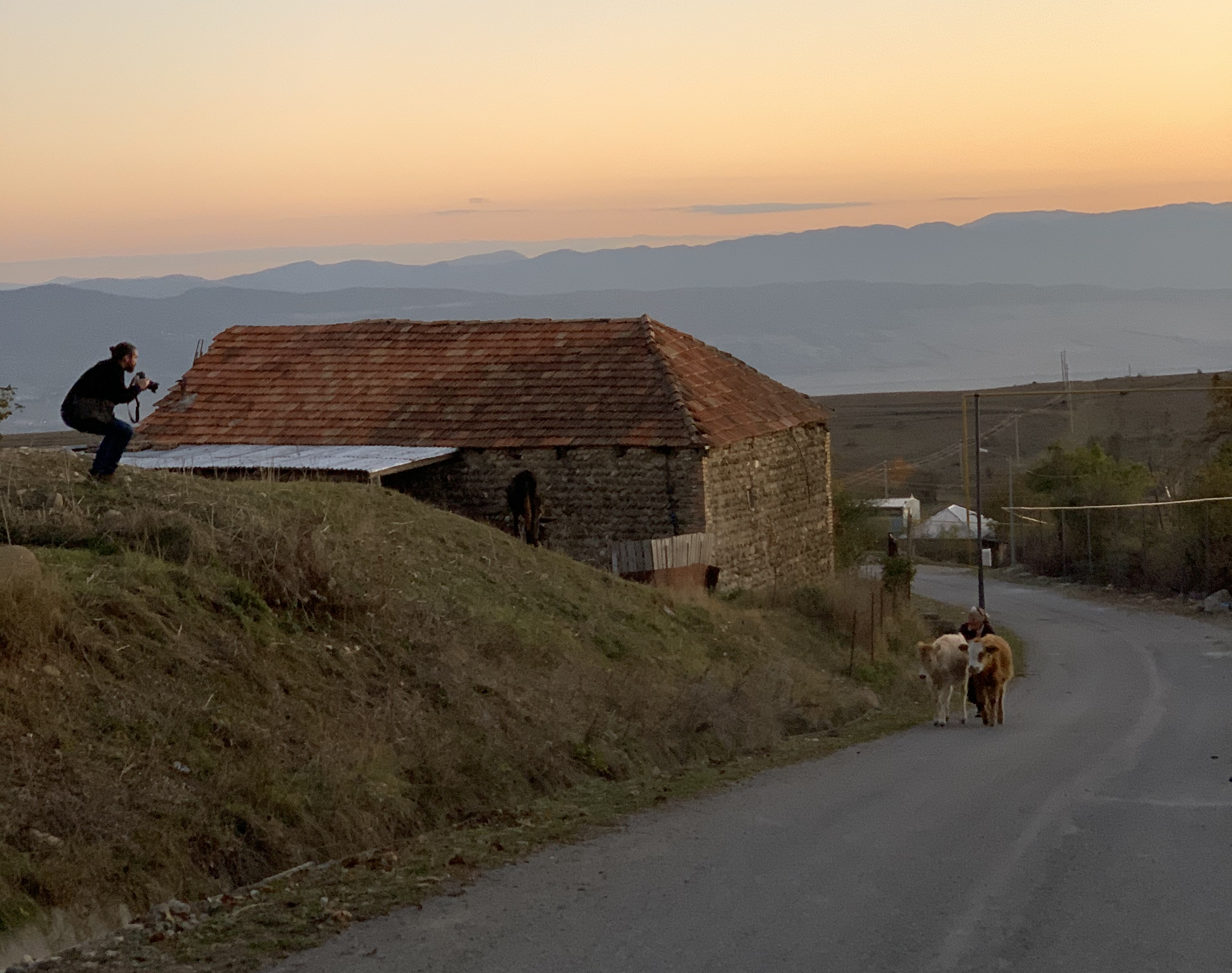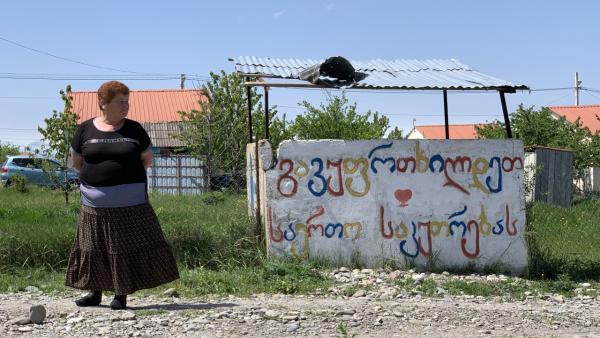
Photo Memories
All I see are cows on the hill and herders tending to them. Pete, on the other hand, sees the last rays of sunshine caressing the Georgian countryside, and many family histories to tell.
The Pete in question is Pete Muller, an award-winning National Geographic photographer. Last November, he was in Georgia for a week, capturing stories for the ICC’s Life After Conflict exhibition. The stories belong to the people affected by crimes allegedly committed in August 2008, in and around the region of South Ossetia, now part of the ICC Prosecutor’s investigations.
As an Outreach officer in the Court’s country office in Georgia, I work with those living in remote villages, who found a temporary home in the settlements for the internally displaced people (IDP). I share information about the investigations and cases that directly affect them and try to provide access to justice for the victims, should they wish to exercise their rights before the ICC. I am in Georgia as part of the team that strives to empower, inform and listen. Pete was in Georgia to capture the essence of what is Life After Conflict.
The sunset scene I mentioned took place in Prezeti, an IDP cottage settlement up in the mountains, an area surrounded by pastures. Raising farm animals, especially cattle that can be let out to graze, is one of the main occupations of locals. Down the hill, an elderly lady guides her cattle back to the stables. Up the hill, we enjoy the landscapes, Pete taking photos of local herdsmen. The sun is down already and we sit around the table, lit by candles since there is no electricity, dining with a family that took temporary refuge in Prezeti, following the conflict. They share their stories, Pete takes photos by candle light, some of his favourite of the day.
In one week, we visited so many people, from shepherds in Prezeti and farmers in Koda, to children in Shavshvebi who are beneficiaries of a psycho-social assistance program. Working with victims means building trust, a relationship Pete established from the very beginning. He came equipped with an open heart and knowledge about the conflict, which meant the world to the people in IDP settlements. To break the ice, especially with children, sometimes shy or anxious, Pete would show photos of the places he had visited, explaining where and how those were taken. He showed genuine sympathy and interest, and listened about the hardships of life after conflict, often sitting around the table with people we visited, capturing their realities, over a piece of freshly baked bread, cheese and homemade wine.
Eventually, this trip turned into something unforgettable for everyone: the community members would show Pete around, telling him about their lives or the experiences of their friends and neighbors during the conflict. I was a farmer. She was a teacher. They are home sick. He wants to go back. Those were the stories told to Pete. Everybody tried their best to give the photographer the time and opportunity for the best shoot.
Stories and photos are what these visits were all about. While Pete was making new memories, the old ones were flooding back from the rare photo albums that survived the war. Most albums and family possessions were lost, though, burned with homes. The value of memories shows in how they remind us of a relative, of our personal history, of who we are as a person. Losing them is like losing a part of you.
During one week in Georgia, Pete Muller took photos capturing stories of the present lives of real people affected by conflict. These photos show the hardship and small delights of their days, actual living conditions and psychological portraits. We were met with a lot of eagerness and enthusiasm from everybody involved, leaving me with hope that this effort would bring some healing and joy to the hearts of the people we visited. If that was the case, it was mission accomplished.
